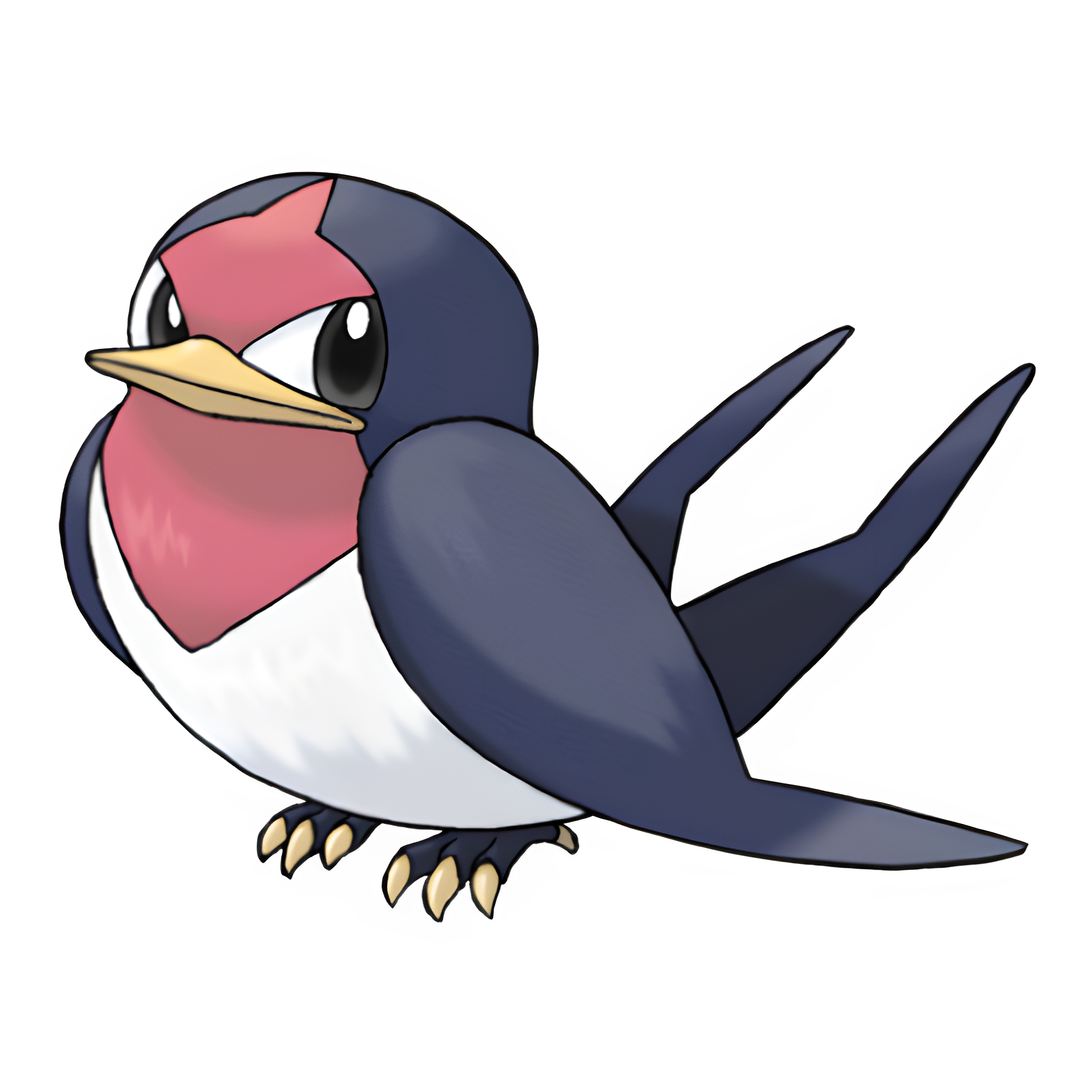Facts for Kids
Taillow is a feisty and energetic bird Pokémon, adept at flying and known for its impressive speed and territorial nature.
Overview
Fun Facts
Biology And Anatomy
Conservation Status
Behavior And Ecology
Cultural Significance
Diet And Feeding Habits
Habitat And Distribution
Reproduction And Lifecycle

Inside this Article
Personality
Population
Territory
Singing
Pokémon
Weather
Rivers
Insect
Food
Did you know?
🐦 Taillow is known as the Tiny Swallow Pokémon and is a Normal/Flying type.
🌍 It first appeared in Generation III, introduced in Pokémon Ruby and Sapphire.
🌪️ Taillow has a knack for building nests on cliffs and tall buildings.
⚡ Taillow is known for its speedy and agile flying abilities.
🥚 It evolves into Swellow starting from level 22.
🎶 Its distinctive cry is often described as resembling a chirp.
👶 Taillow is often favored by novice trainers for its adaptability.
📏 Taillow is approximately 0.6 meters (2 feet) tall.
🌞 In the Pokémon world, it is known for its territorial nature.
🧪 Taillow's abilities include Guts and Keen Eye, showcasing its tenacious spirit.
Introduction
It was introduced in Generation III and is known as the Tidying Pokémon. Taillow is famous for its energetic and playful behavior. It can be found in the Hoenn region, which is based on real places in Japan. This Pokémon can evolve into Swellow when it reaches level 22! Taillow has a unique ability called Guts that makes it stronger when it's hurt. With its bright blue wings and cheerful song, Taillow brings joy wherever it goes! 🎶
Fun Facts
2. Its cheerful chirps can be heard from far away, making it easy to spot! 🎉
3. When Taillow evolves into Swellow, its wings become more powerful and larger! 😲
4. In Pokémon contests, Taillow’s singing abilities can win hearts and ribbons! 🎀
5. Taillow is based on a swallow bird, known for its agility and vibrant colors! 🐦
Biology And Anatomy
The wings are long and made for flight, allowing Taillow to soar through the skies! Its sharp beak helps it catch insects and small food. Taillow's eyes are bright and curious, making it easy to spot when it flits from tree to tree. This Pokémon has feathers that protect it from the weather, keeping it warm during chilly days! ❄
️
Conservation Status
Since it’s common in the wild, it can often adapt to new environments. However, its safety depends on healthy forests and ecosystems. To keep Taillow thriving, it's essential to protect its natural habitats from pollution and deforestation. When nature remains sheltered and clean, Taillow will continue to sing proudly in the skies! Plus, everyone can help by planting trees! 🌳
Behavior And Ecology
️ They are often seen singing together, creating beautiful melodies in the air. This Pokémon is very protective of its territory and will chase away intruders, like other birds! Taillow spends its days looking for insects to eat, navigating trees, and showing off its aerial tricks. It's also very curious, often investigating anything that moves! Taillow plays an essential role in the ecosystem by controlling insect populations. 🌼
Cultural Significance
It symbolizes how everyone can be brave and courageous. Its energetic nature inspires players to stay active and explore! In anime episodes, characters love having Taillow as a companion because it’s cheerful and friendly. Taillow also appears in Pokémon trading cards, where it brings good luck to players. Kids around the world admire Taillow for its colorful design and lively personality! Pokémon fans often create fan art and stories featuring their favorite little bird! 🎨
Diet And Feeding Habits
It loves to hunt down small bugs and insects that fly around its territory. This Pokémon has quick reflexes, allowing it to catch its food mid-air. It’s not picky and will also eat berries if insects are hard to find. Taillow hunts by darting quickly, using its speed to outsmart its prey. When it’s time to eat, you might see Taillow perched on a branch, scanning the area for a tasty snack. 🌿
Its energetic lifestyle depends on a healthy diet!
Habitat And Distribution
It prefers places with lots of trees, where it can build its nests. In the wild, Taillow flits between branches, showing off its flying skills. You might also see Taillow in some Pokémon games set in other regions like the Pokémon Sword and Shield games! Some trainers will search for this little bird in spots like Petalburg City and Route 104. Taillow’s habitat is all about being in nature! 🏞
️

